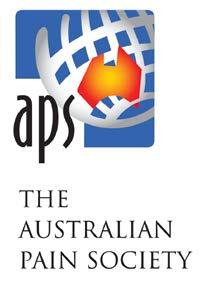Australian Pain Society NEWSLETTER





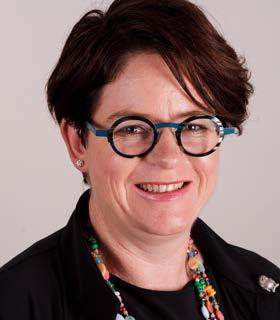
Welcome to 2022, the global year for translating pain knowledge into practice. For those who were able to take a break, I hope you had a safe and enjoyable holiday period with your family and loved ones. Like many of us, I am keen to see the back of 2021 and it is hard to believe it’s February already.
With the New Year comes new events. Please ensure to check out the upcoming events we have listed in this edition.
The APS ASM 10th-13th April is still scheduled to be run, early bird registrations are open until 28th February. The program has been released, and there is a great line up of international and national speakers, plus there are plenty of topical sessions. The best bit is that it will be in Tasmania, and there is still plenty of time to dust off your dancing shoes for the conference dinner. So, what are you waiting for? It’s been ages since we all got to catch up in the flesh so to speak, so yes, like many of us, I am keen to check out the pre-conference workshops, and am looking forward to being able to attend the social events. Best of all, there is an opportunity to pick the brain of a pain researcher and ask all those tricky questions you always wanted to.
Don’t panic - if you have a late breaking abstract there is still time to submit and share your work.
We can all keep our new year resolutions on keeping up with the latest publications by exploring the book review in this edition on paediatric pain. Then check out the systematic review on the impact of chronic pain on driving, find out how opioid cessation can reduce pain and improve function for people attending specialist chronic pain services. Before sinking your teeth into the paper providing validation of hyperspectral imaging as a tool to provide autofluorescent imprints of chronic constriction nerve injury identified by deep learning. If your new year resolution was to do a PhD, then keep an eye out for the APS call out for applications for PhD scholarships. Alternatively, in the FYI section, we have included the link to the site outlining the MBS Pain Management Services changes that will be effective from 1st March 2022.
Keep sharing with us your latest publications and reviews. Looking forward to seeing this year unfold and sharing with you all new developments and research about pain.
All the best
Joanne
For almost three years now, we have all met the challenges for changing how we network with colleagues and peers, keep updated about innovations in practice and learn of current and upcoming research.
After closely monitoring and discussing the COVID-19 situation, the APS Board has decided to ask the Scientific Program Committee to proceed with the conference in Hobart, April 10 – 13, 2022. We are green for GO!
The decision not to postpone was made after receiving steady registrations, and modelling to suggest that Omicron will have peaked in most states in late January to mid-February. In addition, we also took into account the enthusiasm of our international speakers to attend and recognised that many of us wish to see a return to “normal”.
The conference and exhibition hall will have an open plan design to facilitate social distancing whilst still enabling mingling with colleagues and exhibitors. We will be following all Tasmanian Government health and safety requirements in place, which may include having hand sanitiser readily available, social distancing and wearing an approved face mask.
Prior to the conference, it is recommended to please familiarise yourself with the Tasmanian Government requirements for vaccination and travel etc.
If you would prefer not to attend in person, rest assured options to purchase recordings of all sessions will be provided, shortly after the conference concludes, as per our regular face-to-face conference arrangements.
We know that many of you are feeling tired – why not recharge your batteries by catching up, learning something new in the world of pain and enjoying the gourmet food and variety of beverages available, all in the beautiful surrounds of Hobart? Another bonus is the APS 2022 conference runs into the Easter long weekend, so we encourage you to all stay on and take the opportunity to enjoy a much-deserved break.
With this in mind, a friendly reminder, Early Bird Registration deadline is later this month. Be sure to register before Monday February 28 to secure your discounted rate.
I look forward to seeing you in person in Hobart.
Cheers
Trudy
The Australian Pain Society is celebrating its 42nd Annual Scientific Meeting this year, and where better to celebrate it than the Tasmanian capital Hobart. Rich in history since it’s foundation in 1804 as a British penal colony, Hobart sits on the picturesque River Derwent in the south east of the state and is the second oldest capital city after Sydney. Its Aboriginal descendants often refer to themselves as ‘Palawa’.
The conference will be held at the Hotel Grand Chancellor, ideally located on the waterfront, comprising of Victoria Dock (a working fishing harbour) and Constitution Dock (full of floating fish punts and the odd wayward seal). The conference backs onto Easter, giving delegates the opportunity to rest awhile and explore the true wonder of our Apple Isle, a reference to its former status as an important apple grower and exporter.
Hobart Town is a place to explore, from Battery Point with its curious 19th century sandstone and weatherboard cottages nestled in quaint tiny lanes, to Salamanca Place with its Georgian sandstone buildings, formerly used as warehouses for produce such as grain, whale oil, and apples, but are now delightful craft shops, art galleries, bars and cafes. Each Saturday there is the famous bustling outdoor market.
The program this year brings us a formidable variety of national and international speakers, who are true experts in their field. We will be joined by two most impressive international keynote speakers, Dr Beverly Thorn from the USA, and Professor Andrew Rice from the UK, who will be challenging our thinking with their fascinating topics covering the important components of CBT for chronic painful conditions, and assessing and diagnosing patients with neuropathic pain in a variety of contexts, from diabetic neuropathy to peripheral nerve trauma.
We have nine national speakers, including Professor Mark Hutchinson who will be presenting the IASP ‘Global Year Of’ lecture entitled Bench to Boardroom Science. We welcome celebrity Ms Hayley Leake, whose early career research aims to optimize pain education interventions for adolescents and adults with chronic pain. Her 2021 victory on Australian Survivor confirms that when it comes to Brains versus Brawn, Brains win every time! We have A/ Professor Suzanne Nielson, whose work has led to a greater understanding of prescription and over-the-counter drug-related problems, opioid dependence in people with chronic non-cancer pain, and the impact of policy change on opioid-related harms. Historically, Tasmania has been reported as having the highest rate of opioid prescribing of any state or territory in Australia and incidentally is also the world’s largest producer of legal alkaloids. For further information on all our national plenary speakers please visit the conference website.
The latter topic ties in nicely with our novel panel discussion on whether medicinal cannabis will or won’t be the next opioid crisis. This is a new format, and we’re looking forward to a lively debate with panel members including Hon. Ruth Forrest, independent member for Murchison and Inquiry Chair of the ‘Legalized Medicinal Cannabis Final Report’ published in 2015. It’s worth noting that on 1 July 2021 the Tasmanian Department of Health approved Tasmanian General Practitioners to prescribe unregistered medicinal cannabis products, with no restrictions on the medical conditions for which the prescriber may apply.
On Sunday we have our popular pre-conference workshops, covering our usual topics on acute pain, fundamentals, and basic pain research, as well as pharmacology and physiotherapy workshops. These will be followed by the allied health discipline sub group meetings.
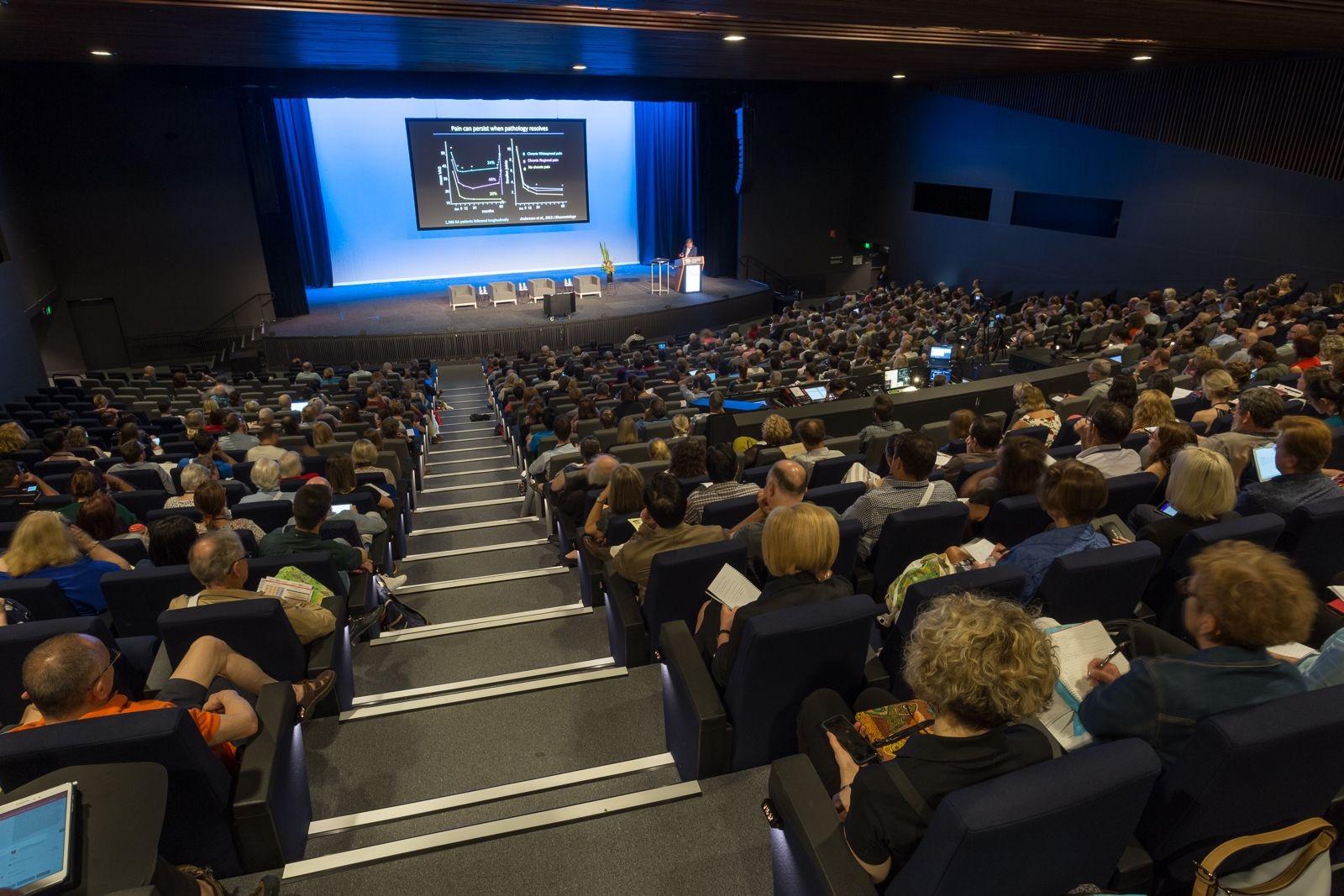

Our 18 topical concurrent sessions and six free paper sessions will cover many aspects of pain prevention and management throughout the age spectrum, providing an interesting foray into the diverse research of pain, with topics ranging from translating neuroscience knowledge, to lived experiences of complex pain, from digital health interventions to National Strategy and service provisions and outcomes. I can go on…
The exhibition hall is the place to ‘eat and greet’. Be sure to attend the Welcome Reception on Sunday, which provides an opportunity to catch up with old friends and colleagues and to meet new ones. For those who may not have experienced the conference setting before or who may be unsure of how to navigate their way around the conference rooms or evening activities, we are introducing a new Buddy system whereby delegates already wisened by years of treading the conference boards can buddy up with someone who’s not quite so experienced. If you’re interested in either being a buddy or ‘budee’, just answer the relevant questions when registering.
We have numerous exhibitors this year, and there will be ample time over the conference to browse amongst the posters.
Our Social Program includes an informal catch up on Monday evening at the Post Street Social Bar on Franklins Wharf, followed by a complimentary guided tour of Parliament House, where Parliament has held its sessions since1856. Do remember to book your slot early! Our Gala dinner will not disappoint, set in 15 acres of native bush land at the magical Glen Albyn estate, with stunning views of the Derwent River. The dance floor is sure to be packed all evening with delegates once again grooving to a popular live band.
For those of you who wish to stay in Hobart for a little while longer, there are plenty of tours and highlights to choose from, with a special 15% discount for all APS delegates and their travelling companions.
The Hobart ASM is not to be missed, so jump on our website and register before 28 February to catch the early bird and secure accommodation in your favourite spot. I look forward to seeing you there!
Dinah Spratt Chair-Local Organising CommitteeDon’t miss out! Register now!
You’ll enjoy an extensive program including pre-conference workshops, international keynote speakers, national speakers and topical sessions.
Join the many other professionals that are involved with pain and pain management and learn with clinicians and researchers across many different aspects of pain management, leaving the conference enabled to make that difference in your sphere of work.
Register Now!
Registrations will increase slightly from 7 April 2022. Register before Wednesday 6 April, 11.59 PM AEST to save yourself $50 on your registration. Plan your conference experience today.
Keynote Speakers
Social Program
Cannabinoids Debate
Trainee Session
Pre and Post Tours
For further information please visit the conference website.
Should you have any queries about the conference, please contact the Conference Secretariat
We look forward to welcoming you to Hobart, Tasmania!

Did you miss your chance to submit your abstract for inclusion at APS 2022 in Hobart?
Finalised your research only after the original abstract deadline?
If yes, don’t despair!
This late breaking research call is your last opportunity to submit an abstract for the 2022 conference! Take up this opportunity and have your work featured as a poster presentation at the only multidisciplinary conference in Australia offering insights into the complex nature of pain management from a variety of medical, nursing and allied health perspectives.
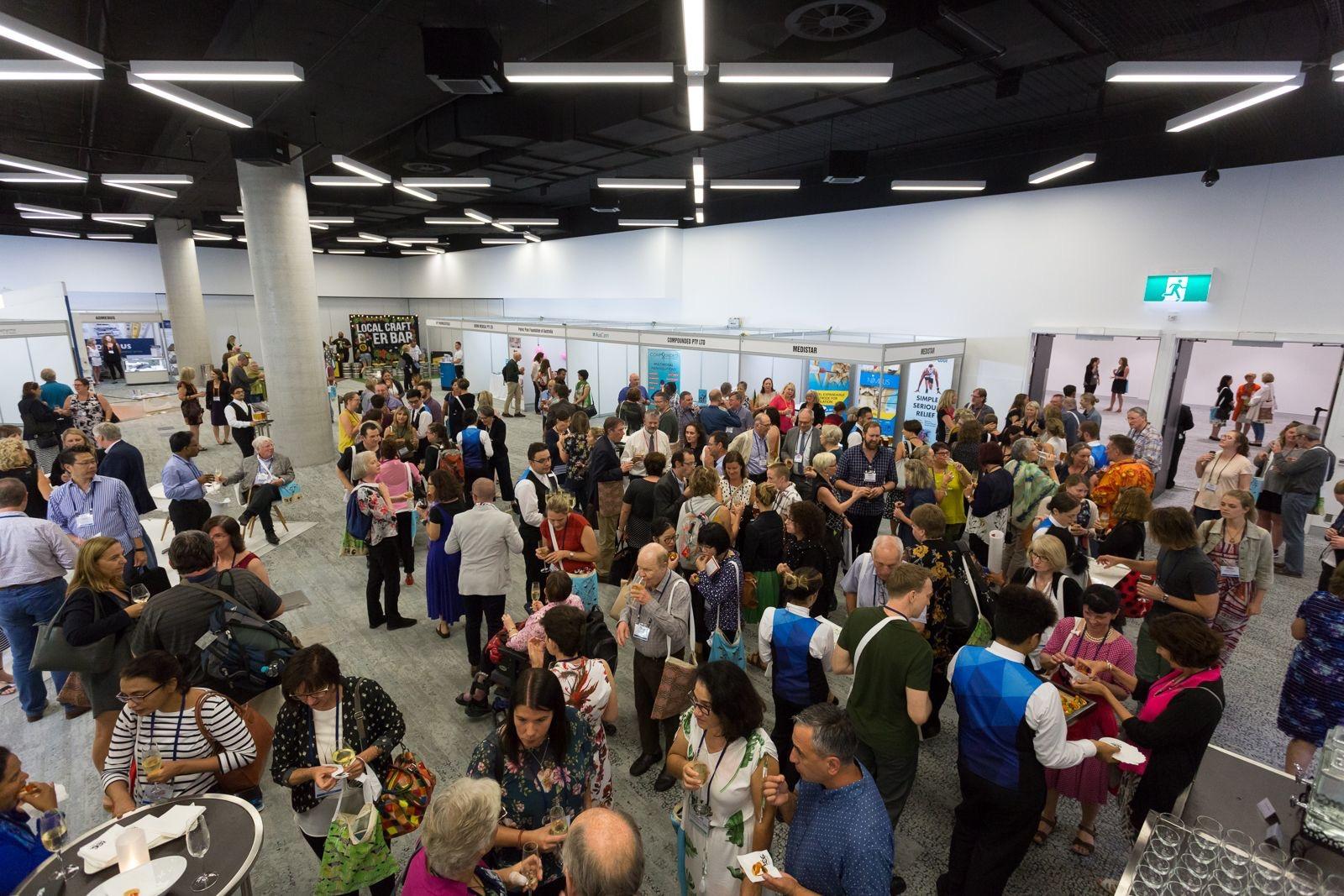
Abstracts can be submitted between Monday 31 January – Monday 7 February 2022.
All accepted authors must register for the conference by the early bird deadline of Monday 28 February 2022.
Connect with renowned experts and hear them speak about new advances in pain management. Enjoy more than 15 clinical and research topical sessions
Attend the Trainee Session to receive practical tips about building your career in pain research.
For further information please visit the conference website
Should you have any queries regarding your submission or the process, please contact the Conference Secretariat
We look forward to receiving your submissions.
Get in early and secure your place at Australia’s only multidisciplinary conference offering insights into the complex nature of pain management from a variety of medical, nursing, and allied health perspectives.
We are so excited to be meeting face to face in April 2022, for the first time in three years!
To register please click here
Save on your APS 2022 registration fee!
Early Bird - Before 28 February 2022
Non-Member Registration Price vs Becoming an APS Member
$1,140 or Being a member saves you up to $270 after membership fees!
APS Student Member Registration Price Only $230 Being a member saves you $845 after membership fees!
Tell your colleagues who are interested in attending APS 2022 so they can save on their registration too!
Become an APS Member here
Should you have any queries about the conference, please contact the Conference Secretariat.
We look forward to welcoming you – finally – to Hobart, Tasmania!

Translating pain knowledge to acute pain practice across disciplines
Join us in this broad-based workshop to suit all knowledge levels and a variety of specialist areas with a multi-disciplinary focus in the field of Acute Pain Management. The aim is to share information, evidence, and our experiences with a focus on a pragmatic approach to optimise our practice. Issues pertinent to today’s challenges will be presented with opportunities to discuss and propose solutions to our greatest problems. It will help update our core knowledge, as well as find ways to move forward in this constantly challenging and vital area of medical care.
When: Sunday 10 April 2022, 8.30 am – 5.00 pm
Where: Hotel Grand Chancellor, Hobart
Cost: Start from $160 (Full Day) per person – Early Bird Registration Deadline: 28 Feb 2022
To register or for further information please visit the Conference Website
The Fundamentals of Pain pre-conference workshop is a succinct overview of the physiology, clinical assessment, and clinical management of pain. The workshop is aimed at the general practitioner, specialist, allied health clinician, or psychologist looking for an introduction to, or update on, persistent pain management.
This workshop is grounded in a biopsychosocial understanding of pain mechanisms and developing a mechanism-based approach to pain assessment and management.
This workshop will compliment those with an interest in attending an afternoon session of pharmacology, acute pain, or physiotherapy topics.
When: Sunday 10 April 2022, 8.30 am – 12.30 pm
Where: Hotel Grand Chancellor, Hobart
Cost: Start from $110 per person – Early Bird Registration Deadline: 28 Feb 2022
To register or for further information please visit the Conference Website
You are invited to attend the
Inter-disciplinary pain management has been the “gold standard” approach for decades. When it works, it is tremendous! But, there are many challenges applying this in practice. From interpersonal difficulties to systemic regulations, achieving strong communication and a united team approach can be hard to achieve. This workshop will look at the benefits and challenges of inter-disciplinary pain management. Attendees will leave this workshop stimulated as to how they could improve this care in their own work setting.
When: Sunday 10 April 2022, 1.30 pm – 5.00 pm
Where: Hotel Grand Chancellor, Hobart
Cost: Start from $110 per person – Early Bird Registration Deadline: 28 Feb 2022
To register or for further information please visit the Conference Website
You are invited to attend
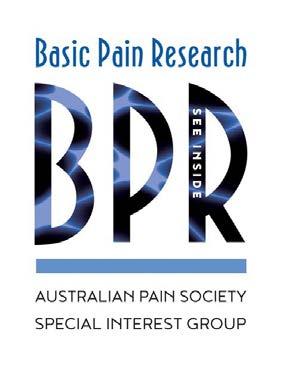
This workshop will showcase the latest in Australian basic pain research from early career and senior researchers, and provide a forum to discuss mechanisms of nociception and pain across all levels of investigation: from molecular and cellular analyses, to studies in animals and humans (preclinical or clinical).
This workshop is open to all interested in mechanisms of nociception and pain including basic and clinical researchers, health professionals, and students at all levels.
When: Sunday 10 April 2022, 8.30 am – 12.30 pm
Where: Hotel Grand Chancellor, Hobart
Cost: Start from $110 per person – Early Bird Registration Deadline: 28 Feb 2022
To register or for further information please visit the Conference Website
You are invited to attend the
Translating current evidence in the management of nociplastic pain conditions into clinical practice
The intended audience includes GPs, pharmacists, specialists, and other allied health professionals with interest in pharmacology and its application in persistent pain within the clinical setting.
In line with the IASP Global year of translating knowledge into practice, this interactive workshop will focus on the evidence-based learnings of nociplastic pain conditions. It will explore pharmacological, complementary medicines, and the possible correlations of the gut microbiome in chronic pain conditions. We’ll also explore the evidence of placebo response and techniques and its influential role in each of our interactions with patients having a magnifying (or inhibiting) the powerful medication we dispense.
The workshop will include a case study for practical application of principles that will be addressed by the various expert speakers. There will be opportunities for questions and networking with peers so current evidence-based knowledge can be optimised and translated in everyday practice.
When: Sunday 10 April 2022, 1.30 pm – 5.00 pm
Where: Hotel Grand Chancellor, Hobart
Cost: Start from $110 per person – Early Bird Registration Deadline: 28 Feb 2022
To register or for further information please visit the Conference Website
Have you ever wanted to ask a well-known researcher –“How did you know this was for you?”
“How did you know what opportunities to say yes to and what to say no to?”
If you have wanted to ask, now is your chance!
This session is for early career researchers, and includes networking opportunities with a number of the plenary speakers including:

> Dr Christine Barry, Flinders University, SA
> Professor Steve Kamper, University of Sydney, NSW
> A/Professor Suzanne Nielsen, Monash Addiction Research Centre, VIC
> Professor Andrew Rice, Imperial College London, United Kingdom
Date: Monday 11 April 2022
Time: 5:30pm - 6:30pm
Cost: $10 per person, includes a drink on arrival
When registering for the conference, don’t forget to add in a ticket to the Trainee Session! To register click here
Did you miss any live sessions from the last APS Conference and webinar series?
Or do you just want to re-watch your favorite sessions?
On demand recordings are still available in the APS 2021 Portal.
Take this opportunity to access all session recordings and poster presentations as they will only be available until April 2022.
For any assistance in accessing the portal or other information please contact APS Conference Secretariat.
Chapter 1: About Pain
Chapter 2: Identification and assessment of pain in aged care residents
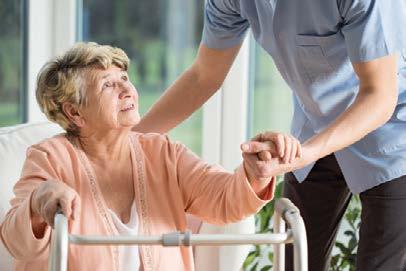

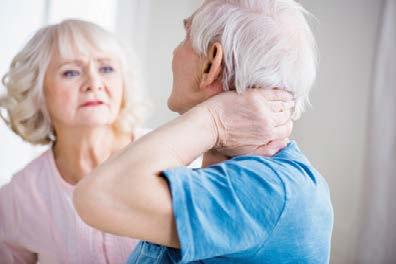
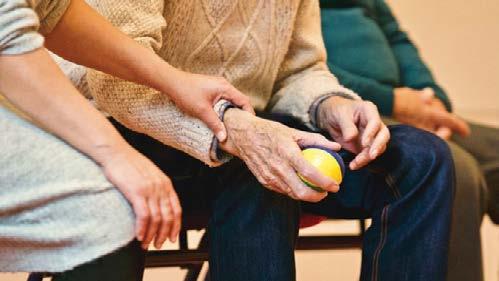
Chapter 3: Beyond medication: psychological and educational approaches to pain management
Chapter 4: Movement and physical activity
Chapter 5: Complementary approaches to pain
Chapter 6: Pharmacological treatments
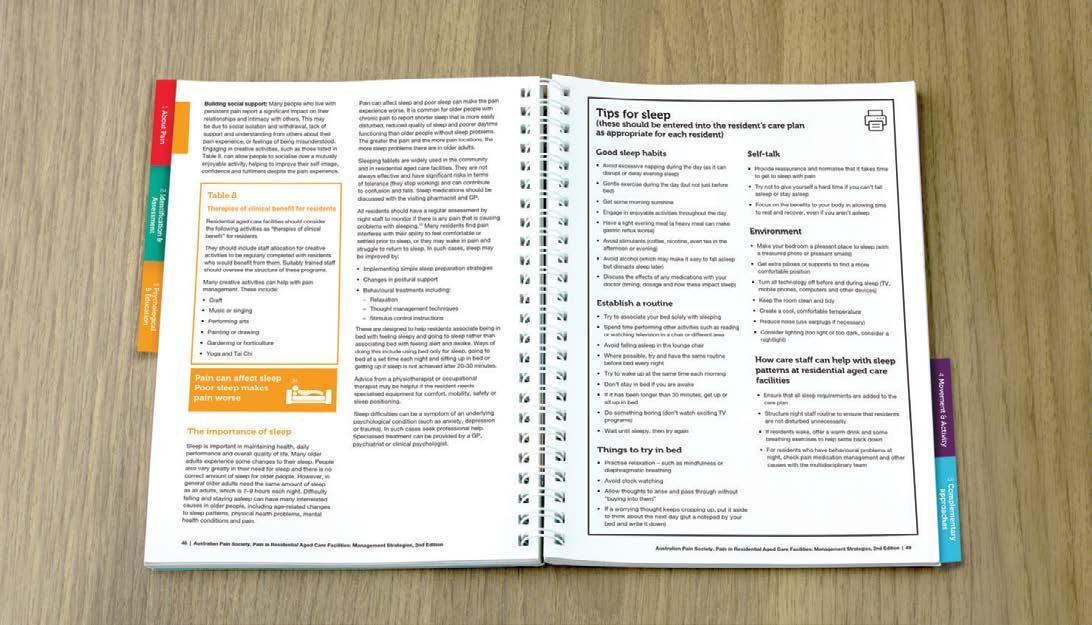
Chapter 7: Dementia and cognitive impairment: special considerations
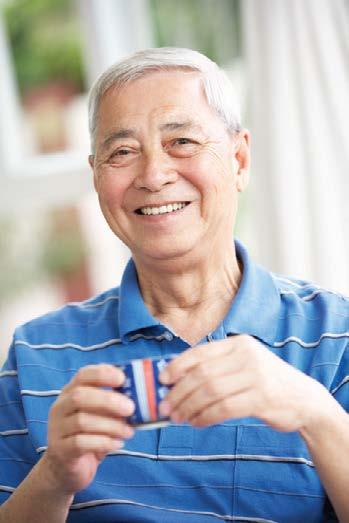
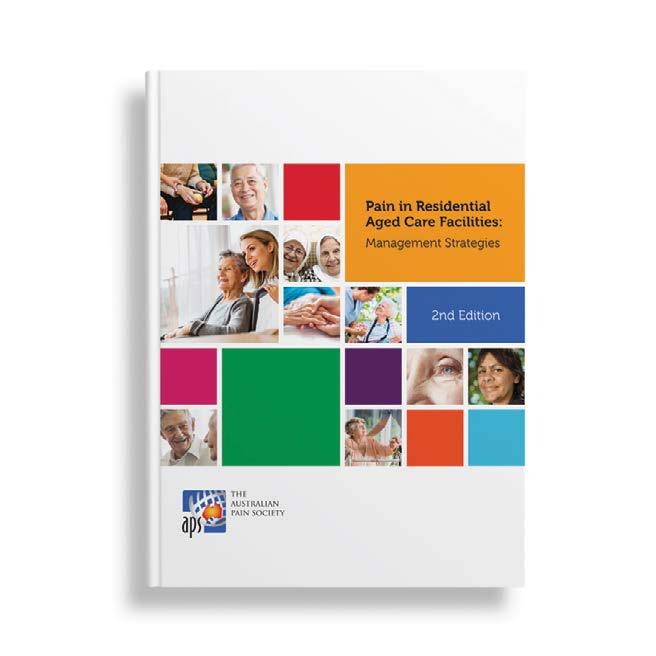
Chapter 8: Pain at the end of life
Chapter 9: Pain and nutrition
Chapter 10: Quality and systems issues
The 2022 Global Year for Translating Pain Knowledge to Practice has been officially launched by the International Association for the Study of Pain (IASP).
To download a copy of the locally produced poster and to access the IASP Fact Sheets, visit the Global Year page of the APS website. Logos and shareable graphics are also available on IASP’s website. Along with our regular collaborators:
> New Zealand Pain Society











> Faculty of Pain Medicine, ANZCA
we encourage you to help raise awareness of this important topic.
If you conduct an event to raise awareness of Translating Pain Knowledge to Practice, please send us a report and photos to share with your fellow members.


Thank you to APS members Daniel S Harvie, G Lorimer Moseley, Ann Meulders, and Michele Sterling and their colleagues Ross T Smith and Bart Michiels for sharing the following recent publication.
Article first published online: Feb 2020
Journal Reference: PubMed





DOI: 10.1097/AJP.0000000000000780
illusion-enhanced-virtual-reality-exercise-forneck-pain-a-replicated-single-case-series/











Body illusions have shown promise in treating some chronic pain conditions. We hypothesized that neck exercises performed in virtual reality (VR) with visual feedback of rotation amplified would reduce persistent neck pain.
In a multiple-baseline replicated single case series, 8 blinded individuals with persistent neck pain completed a 4-phase intervention (initial n=12, 4 dropouts): (1) “baseline”; (2) “VR” during which participants performed rotation exercises in VR with no manipulation of visual feedback; (3) “VR enhanced” during which identical exercises were performed but visual feedback overstated the range of motion being performed; (4) “follow-up.” Primary outcomes were twice-daily measures of pain-free range of motion and pain intensity. During the baseline and follow-up phases, measures were taken but no intervention took place.
For further information:
Australian Pain Society apsoc.org.au
No differences in primary outcomes were found between VR and baseline, VR enhanced and VR, or VR enhanced and follow-up.
Discussion
Faculty of Pain Medicine, Australian and New Zealand College of Anaesthetists anzca.edu.au


New Zealand Pain Society nzps.org.nz
Our hypothesis, that neck exercises performed
The International Association for the Study of Pain (IASP) iasp-pain.org

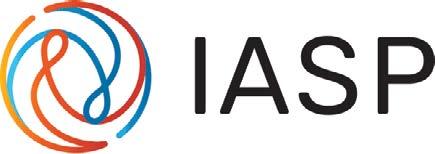
Dr. Aidan Cashin is the recipient of the 2022 Ronald Dubner Research Prize. This prize recognizes the best clinical or basic science research paper, series of papers, or doctor thesis in the field of pain published while the candidate trained as a student, intern, resident, or pre/ post-doctoral fellow.

Dr. Cashin is recognized for his research which focuses on investigating the mechanisms of healthcare intervention for optimization and translation into clinical practice and health policy. Most of Dr. Cashin’s work is applied to the management of chronic musculoskeletal conditions, and he conduct methodological work that aims to improve research transparency and openness.
Dr. Cashin is an Exercise Physiologist, National Health and Medical Research Council Emerging Leadership Fellow at the Centre for Pain IMPACT Neuroscience Research Australia, and an Associate Lecturer at the University of New South Wales. Dr. Cashin will present his research at the 2022 IASP World Congress on Pain in Toronto, Canada, 19-23 September.
Thank you to APS member Mark R Hutchinson and his colleagues Martin E Gosnell, Vasiliki Staikopoulos, Ayad G Anwer, Saabah B Mahbub, Sanam Mustafa, Ewa M Goldys, for sharing the following recent publication.
Article first published online: 7 October 2021
DOI: Martin E.Gosnell, Vasiliki Staikopoulos, Ayad G.Anwer, Saabah B.Mahbub, Mark R.Hutchinson, SanamMustafa, Ewa M.Goldys
DOI: https://doi.org/10.1016/j.nbd.2021.105528
Link: https://www.sciencedirect.com/science/ article/pii/S0969996121002771
Abstract
Introduction
Our understanding of chronic pain and the underlying molecular mechanisms remains limited due to a lack of tools to identify the complex phenomena responsible for exaggerated pain behaviours. Furthermore, currently there is no objective measure of pain with current assessment relying on patient self-scoring. Here, we applied a fully biologically unsupervised technique of hyperspectral autofluorescence imaging to identify a complex signature associated with chronic constriction nerve injury known to cause allodynia. The analysis was carried out using deep learning/artificial intelligence methods. The central element was a deep learning autoencoder we developed to condense the hyperspectral channel images into a fourcolour image, such that spinal cord tissue based on nerve injury status could be differentiated from control tissue. This study provides the first validation of hyperspectral imaging as a tool to differentiate tissues from nerve injured vs non-injured mice. The auto-fluorescent signals associated with nerve injury were not diffuse throughout the tissue but formed specific microscopic size regions. Furthermore, we identified a unique fluorescent signal that could differentiate spinal cord tissue isolated from nerve injured male and female animals. The identification of a specific global autofluorescence fingerprint associated with nerve injury and resultant neuropathic pain opens up the exciting opportunity to develop a diagnostic tool for identifying novel contributors to pain in individuals.
Research was conducted in a laboratory setting
We used the “Grace model” of graded chronic constriction nerve injury-induced neuropathic pain in male and female Balb/c mice.
Our principal method was hyperspectral microscopy imaging of spinal tissue autofluorescence. This label-free technology is capable of identifying endogenous fluorescent signals from cells and tissues with the use of multiple excitation and emission wavelengths. Imaging data were quantified and interpreted by big data methods including deep learning.
We have identified consistent global autofluorescence changes occur in spinal cord tissue of animals following chronic constriction injury and subsequent development of an exaggerated pain state called allodynia. The autofluorescent signals associated with nerve injury were not diffuse throughout the tissue but formed specific microscopic size regions. Spinal cord tissue could be further discriminated based on whether they were isolated from male or female mice.
This foundational study provides the first validation of hyperspectral autofluorescence imaging as a tool to differentiate spinal cord tissues from an established model of neuropathic pain and control mice based on their autofluorescent profile.
The hyperspectral autofluorescence imaging approach outlined in this study is a major advance in the repertoire of tools available to neuroscientists to identify biomarkers of pain and develop diagnostic tools to identify novel contributors to pain in patients. This study represents a new frontier in pain research; we have demonstrated for the first time that a cell type free approach can identify autofluorescent changes following nerve injury in regions that encompass cellular bodies as well as the extracellular matrix.
Declaration
This work was funded by the Australian Research Council Centre of Excellence for Nanoscale Biophotonics CE140100003. One of the authors, M. Gosnell is affiliated with Quantitative Pty Ltd. who currently manufactures bespoke hyperspectral equipment for microscopy.
Thank you to APS member Dr Nicole Andrews and her colleagues Dr Atiyeh Vaezipour, Dr Oscar Oviedo-Trespalacios, Professor Mark Horswill, Javier Rodriquez, Associate Professor Venerina Johnston and Professor Patricia Delhomme for sharing the following recent publication.
DOI: 25 June 2021
DOI Journal Reference: Vaezipour, Atiyeh, OviedoTrespalacios, Oscar, Horswill, Mark, Rod, J. E., Andrews, Nicole, Johnston, Venerina and Delhomme, Patricia (2021). The impact of chronic pain on driving behaviour: a systematic review. Pain, Publish Ahead of Print.
DOI: https://doi.org/10.1097/j. pain.0000000000002388
Link: https://journals.lww.com/pain/ Abstract/9000/Impact_of_chronic_pain_on_ driving_behaviour__a.97978.aspx
Driving is a complex and dynamic task that requires both the ability to identify hazards and react in a timely manner to driving situations to avoid crashing. Driving is conceptualised as involving three levels of performance: 1) high-level planning regarding an entire journey (strategic), 2) performing driving manoeuvres and monitoring potential hazards (tactical), and 3) operating systems within the vehicle (operational). Based on the Michon model, driving performance is the sum of the individual performance at each of these three levels of the driving task. To date, relevant research evidence on the effect of chronic pain on driving performance has mostly targeted the pharmacological side effects on driving. The primary objective of this review was to assess the evidence on driving behaviour in individuals experiencing chronic pain at the three levels of the Michon model of driving behaviour. In addition, this review had the secondary objective to assess the occurrence of motor vehicle crashes in drivers with chronic pain.
Studies were identified through searches of 4 databases: Embase, PubMed, Scopus, and PsycINFO. The search strategy was developed using MeSH (Medical Subject Headings) and keywords associated with chronic pain, back pain, neck pain, musculoskeletal pain, in combination with motor vehicle crash, traffic crash, and driving.
After full-text screening, 22 studies were identified as eligible for inclusion. Findings suggest that drivers experiencing chronic pain often reported experiencing difficulties at all three levels of the driving task. Driving difficulties often observed at a strategic level included driving in heavy traffic, driving alone, driving at night, and prolonged driving. At the tactical level, difficulties included reversing, changing lanes, merging in traffic, turning, steering, or cornering. Finally, at the operational level, difficulties encompassed getting into the driver’s seat, reaching for seat belts, key manipulation, operating foot pedals, braking or accelerating, steering wheel control, and performing sudden longitudinal and lateral control activities. Findings provide some evidence suggesting that chronic pain could result in an increased crash risk among drivers. The review highlighted the considerable limitations of the existing literature on this topic.
More research is needed to assist clinicians to assess fitness to drive in the chronic pain population. In the interim, the clinical judgement on the ability to drive has to be based on the individual situation of a patient.
The funding support for this research is provided by the Motor Accident Insurance Commission (MAIC), Australia. Dr Oscar Oviedo-Trespalacios contribution to the manuscript was funded by an Australian Research Council Discovery Early Career Researcher Award [DE200101079].
Thank you to APS members Hilarie Tardif and Chris Hayes and their colleague Samuel Allingham for sharing the following recent publication.
Article first published online: May 2021
Journal Reference: Tardif H, Hayes C and Allingham S F (2021) Opioid cessation is associated with reduced pain and improved function in people attending specialist chronic pain services. The Medical Journal of Australia, 214 (9): 430-432.
DOI: https://doi.org/10.5694/mja2.51031
Link: https://onlinelibrary.wiley.com/share/author/ CXZKQWPISZSDVZV9W72Y?target=10.5694/mja2.51031
Abstract
Introduction
Practitioners who prescribe opioid medications for people with chronic non-cancer pain must navigate increasingly stringent policy requirements, research findings questioning the benefit of opioids for such patients, and patients who fear uncontrolled pain if opioids are withdrawn.
A major focus for many specialist multidisciplinary pain management services is to support patients reduce their opioid use, which typically involves collaboration between the patient, their GP, and the pain service. The aim of this study was to explore the impact of changes in opioid use on outcomes for patients following pain management.
Methods
We analysed data from the electronic Persistent Pain Outcomes Collaboration collected at 67 pain services during January 2015 – June 2020. Data for all patients with completed episodes of care, and who had answered questions about opioid use at referral and episode end were included.
Over 10,000 patients provided information at both referral and at the end of their treatment episode: 56% were women, and 34% had experienced their pain for more than five years. The most frequent site of their main pain was the back (38%). Just over 60% were using opioid medications at referral, with a mean oral morphine daily dose of 56.3mg. People using opioids at referral reported higher mean pain scores and greater interference in daily activities compared to those who were not using opioid medications. They also reported worse depression, anxiety, stress, pain catastrophising, and pain self-efficacy.
At the end of the treatment episode, positive change and clinically significant improvement was greatest for those patients who had ceased opioid use. Scores for measures specifically related to pain experience (pain severity, interference, catastrophising and self-efficacy) at the end of treatment were similar to or better than those of patients who had not been using opioids at referral, despite greater initial pain severity. Conversely, the smallest mean improvements were for the patients who had not reduced opioid use by at least 50%.
Conclusions
These results are encouraging, showing that significant clinical improvements are possible for people with chronic non-cancer pain attending multidisciplinary pain management services in Australia and New Zealand, even as they discontinue opioid medications. The challenge is to extend these services and supported selfmanagement skills to primary and community care.
Declaration
The Australian Pain Society (APS) is keen to share publications from our members with their colleagues via our eNewsletter. If you’ve had an article accepted or published recently, please contact our Assistant Editor Joanne Harmon via the APS Secretariat (aps@apsoc.org.au) with the title, authors, and reference (i.e., journal, volume, and DOI) of your article and request the submission template. We would love it if you also supply a short commentary (300 words max) to give our readers the gist of the article.
Hilarie Tardif, Chris Hayes and Samuel Allingham have nothing to declare
Oxford Textbook of Pediatric Pain, Second Edition
Edited by: Bonnie J Stevens, Gareth Hathway and William T ZempskyDate published: 2021
Publisher: Oxford University Press
ISBN: 978-0-19-881876-2
Dr Arno Ebner is a private Paediatrician working in his own practice in Cairns. He has developed a special interest and gained his experiences in paediatric pain while working in Child Oncology and Palliative Care during his six years in Wellington New Zealand. When moving to Australia he continued to support young patients with chronic pain conditions and became a member of the Australian Pain Society, Pain in Childhood Special Interest Group and he currently has the role as communication officer.
The Oxford Textbook of Pediatric Pain is a most recommended book, worthwhile to have in the bookshelf as a state-of-the-art reference book. It is probably the most comprehensive resource on the market for anyone interested in and managing children and adolescents with acute, procedural, and chronic pain.
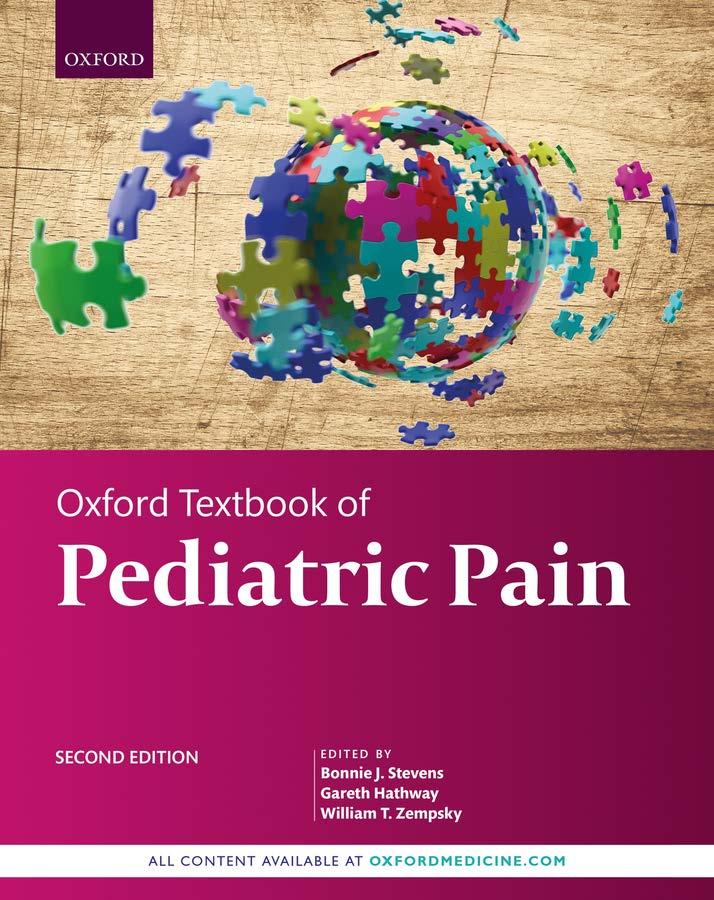
When I was asked to write a review for the Australian Pain Society Newsletter, I was very happy to do it as I bought the first edition many years ago when it was published in 2014. At this time, I was working in Paediatric Oncology and Palliative Care, and I was looking for a good textbook about Paediatric Pain. This was the best book about Paediatric Pain I could find then. Since then I have not come across a more detailed book covering in such depth and clarity paediatric pain in one book and it remains a regular useful resource, not only for myself but my colleagues and students alike who know where to find it.
Interestingly the spelling in the first edition was British ‘Oxford Textbook of Paediatric Pain’ while the second edition is now titled in American English ‘Oxford Textbook of Pediatric Pain’.
The second edition has been updated to reflect the significant developments in paediatric pain over the last seven years since the first edition. Starting with advancements in basic science; a new chapter is for example ‘Genetics and pain in childhood’, to the much needed and sometimes neglected discussion on how to transfer increased knowledge into practical changes to optimise the care for our pain patients. After all, knowledge is great but the main goal for our patients is feeling better, in the best-case scenario pain free, and it is of little value to the child that I know that certain genes like CACNA1A, ATP1A2, and SCN1A play a role in familial hemiplegic migraine but probably not in their common migraine. The wonderful thing is, this book covers both, if you want to learn
about genetics, genomics and other ‘omics’, you will find it, if you want to know how to translate knowledge into practice, and how to best support your patient with common migraine it is here as well.
The Oxford Textbook of Pediatric Pain is divided into 9 sections and this framework has not changed between the 1st and 2nd edition:
Section 1: Introduction into pain
Section 2: Biological basis of pediatric pain
Section 3: Social and psychological basis of pediatric pain
Section 4: Pain in specific populations and diseases
Section 5: Measurement of pain
Section 7: Psychosocial interventions
Section 8: Physical Interventions
Section 9: Special topics
The special topics include e.g., chapters about complementary drugs and therapy, pain in the cultural context and the aforementioned important area of knowledge translation for individuals and for organisations to implement pain evidence into practice. The book concludes with sociodemographic disparities in paediatric pain management, something we are all aware of but still way too often feel helpless to make a lasting change for the children most in need, be it a lack of services in remote areas, costs of medication or other disadvantaging circumstances.
135 expert authors contribute in 62 chapters to the 9 sections. In total this book has roughly 670 pages of information, index not counted. The authors come from various fields of expertise including medicine, psychology, occupational therapy, nursing, research, and teaching. Each of them is well experienced and regarded in their field making the book suitable not only for clinicians but for the whole multidiscipline required for the optimal care for children with pain.
The interested reader will not only get the most up to date and evidence based in-depth information from studying the comprehensive chapters, but the texts are aided by summaries, perspectives, case examples, tables and figures and concluding remarks helping the reader to quickly absorb and remember the relevant information and have a take home message.
Whatever the reader’s part in paediatric pain management is, they will find the second edition of The Oxford Textbook of Pediatric Pain to be a valuable resource.
Dr Arno Ebner has nothing to declare

The APS Board will be calling for applications for PhD Scholarships soon! Get your thoughts and paperwork together now!!
ROYAL NORTH SHORE HOSPITAL
FORMAL DEGREE COURSE (ONLINE)
Graduate Certificate, Graduate Diploma and Masters
Endorsed by the International Society for the Study of Pain (IASP), this leading degree program provides advanced evidence-based and clinically relevant education in pain management for graduates in medicine, dentistry, nursing, physiotherapy, psychology, occupational therapy and all other allied health disciplines.
The program has been developed and is taught by Sydney Medical School’s Pain Management Research Institute (PMRI), based at Royal North Shore Hospital and the University of Sydney’s Kolling Institute.
The program is conducted entirely online and commences in March or August each year, with enrolments closing either late January or late June.
For dates & further information visit: sydney.edu.au/medicine/pmri/education
T: +61 2 9463 1516
E: paineducation@sydney.edu.au
Following the success of their initial season in 2021, One Thing is back for Season Two. The bigger and better One Thing team (Dr Joshua Pate, Dr David Kennedy, Dr Lincoln Tracy, Miss Hayley Leake, Dr Aidan Cashin, and Dr Daniel Harvey) have interviewed nine new speakers (made up of clinicians, researchers, and people living with pain) this season to find out the one thing they want people challenged by pain to know.
Some of the guests featured in Season Two include Pete Moore (creator and author of the Pain Toolkit), Professor Kathleen Sluka (University of Iowa), and Professor Christopher Eccleston (University of Bath). It all kicks off on February 18!!
Keep an eye out on our website and social media for more information. You can find us at onething.painsci. org or at @onething_pain on Twitter and Instagram

Season Two of One Thing is powered by the Australian Pain Society
The Faculty of Pain Medicine (FPM) has generously extended to all APS members a purchase discount of 20% for the “Better Pain Management” modules and courses.
Purchase any quantity of Better Pain Management modules or courses in ONE transaction and receive the 20% APS member discount on the entire transaction (no further discounts apply).
This discount gives you the flexibility to “Pick ‘n’ Mix” your preferred topics for self-directed and self-paced e-learning.
The 20% discount can be applied to:
> Any single module purchases
> Three-module pre-packaged courses or ‘select your own’ three module pack
> Six-module pre-packaged courses or ‘select your own’ six module pack
> 12-module complete BPM course
To enrol in any course and take advantage of this discount, please Contact BPM and nominate your module or course selections. BPM will provide a unique APS voucher code for the 20% APS member discount on your purchase.
SUBMIT YOUR POSTER AT www.ispp2022.nz/website/17292/home/








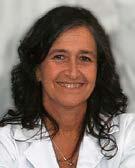
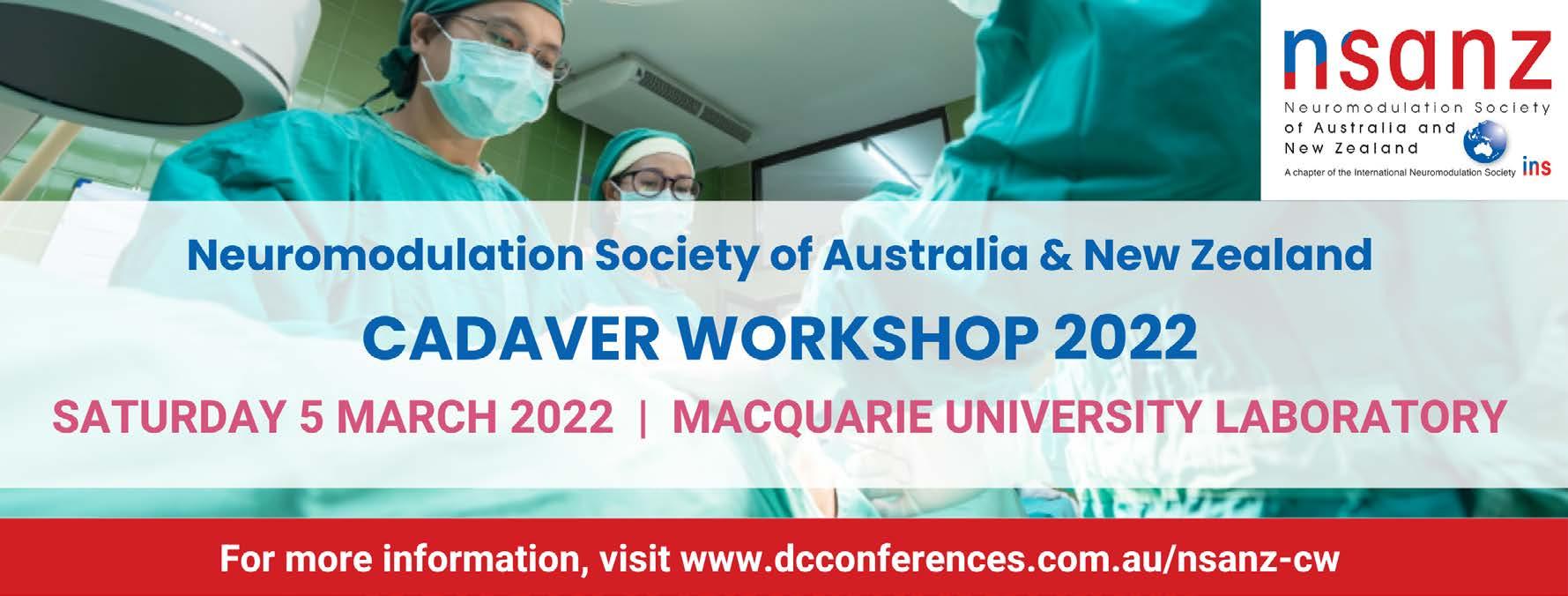


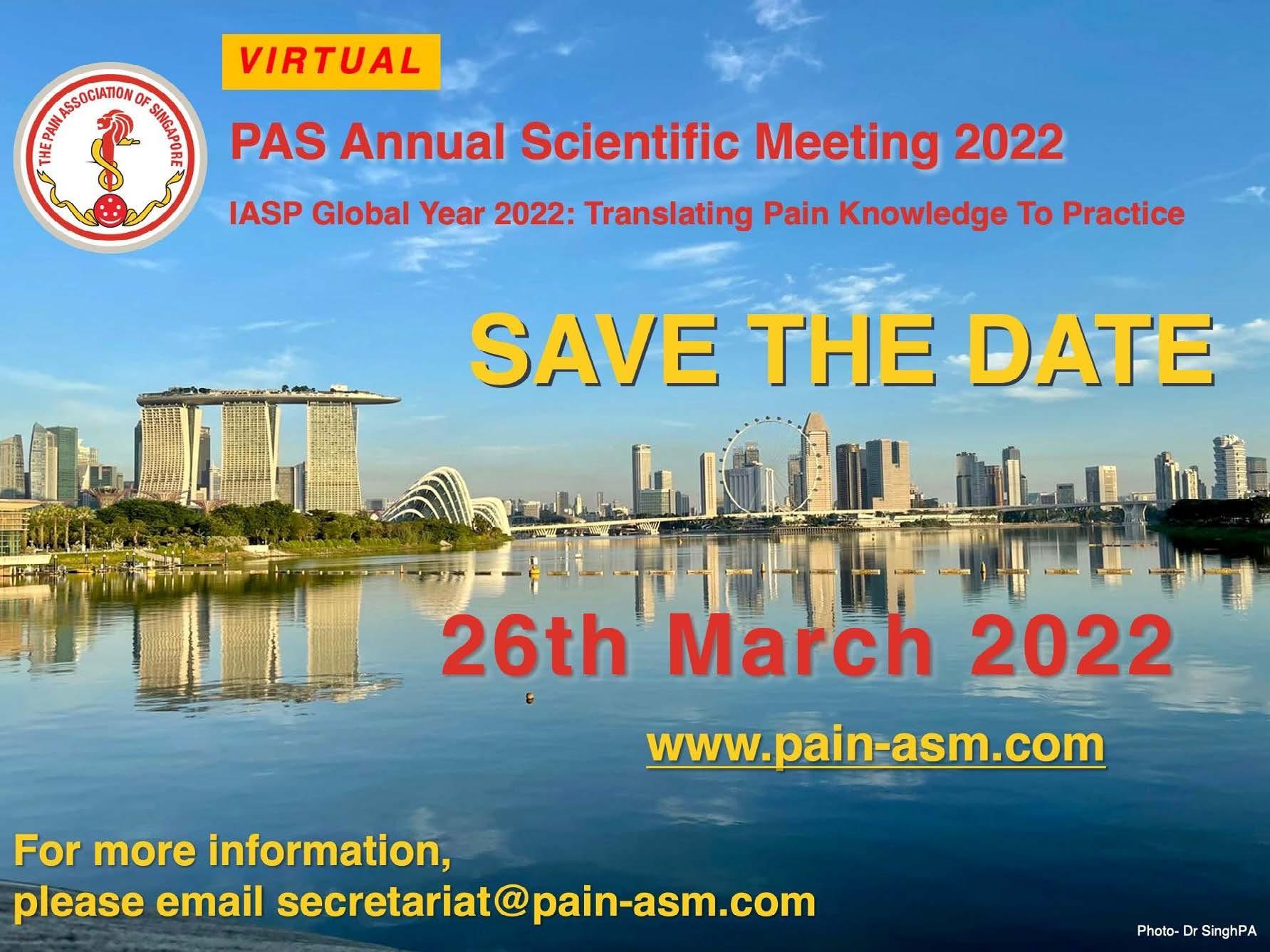
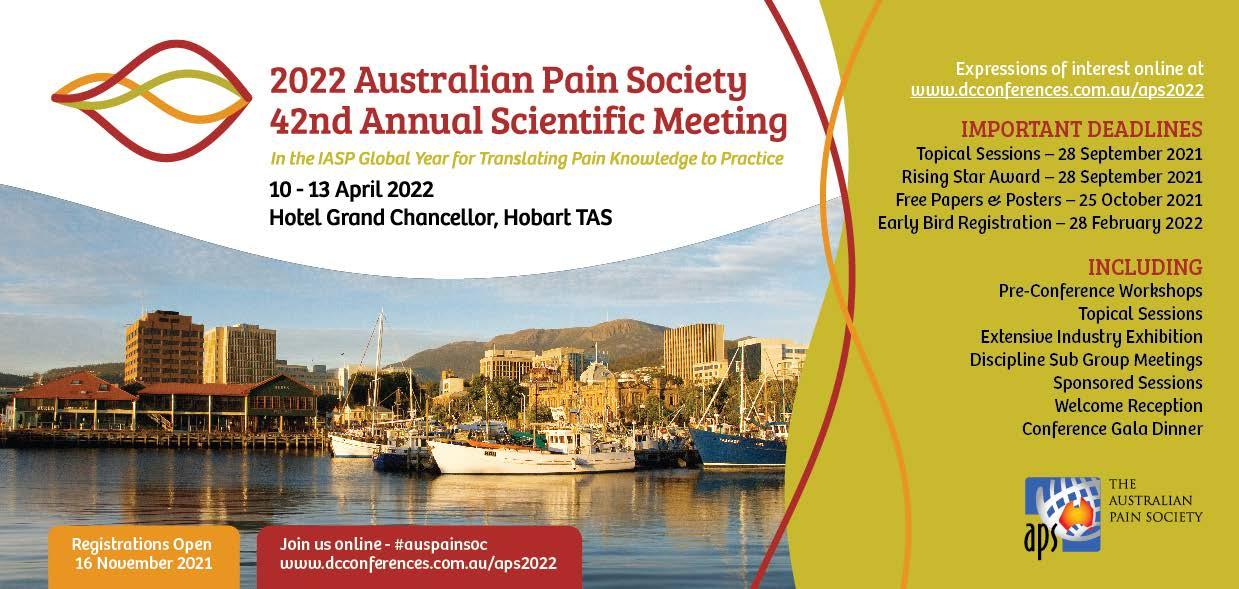

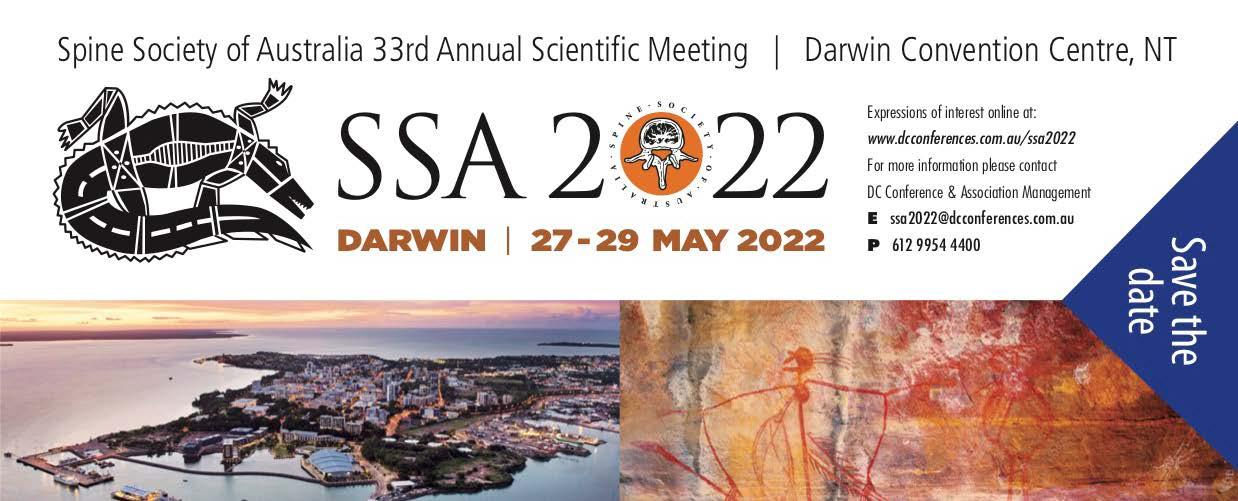
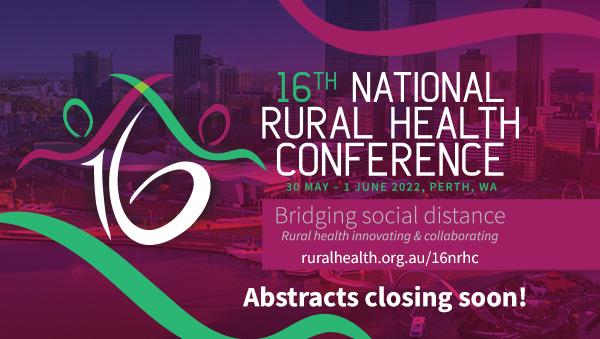
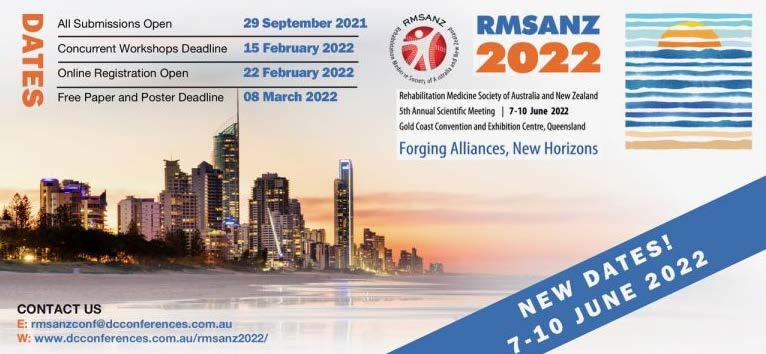
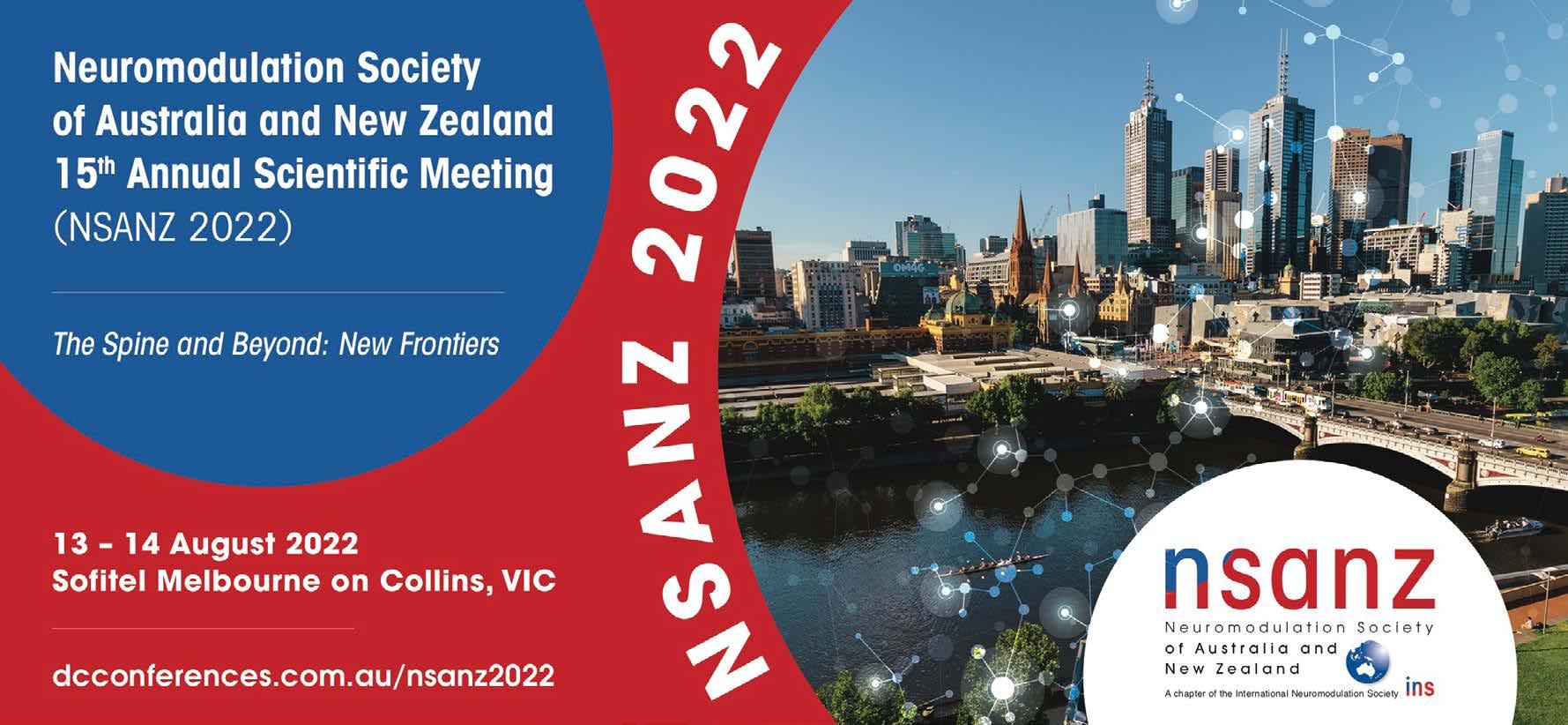
> MBS Pain Management Services Changes effective 01MAR22: http://www.mbsonline.gov.au/internet/ mbsonline/publishing.nsf/Content/Factsheet-changespain-management
> Latest opioid data from the Australian Bureau of Statistics: Opioid induced deaths in Australia. https:// www.abs.gov.au/articles/opioid-induced-deathsaustralia
> Australia’s annual overdose report 2019 from the Pennington institute : http://www.penington.org.au/ australias-annual-overdose-report-2019/
> The Third Australian Atlas of Healthcare Variation: This series explores how healthcare use in Australia varies depending on where people live. It investigates reasons for variation that may be unwarranted, and provides specific achievable actions to reduce unwarranted variation.
https://www.safetyandquality.gov.au/atlas
> Painaustralia eNewsletter latest issue, available online at http://www.painaustralia.org.au/media/enews
> ePPOC: electronic Persistent Pain Outcomes
Collaboration: The electronic Persistent Pain Outcomes Collaboration (ePPOC) is an Australasian initiative that aims to improve the quality of care and outcomes for people who experience chronic pain. For more information about ePPOC, refer to the website: http://ahsri.uow.edu.au/eppoc/index.html
> PainHEALTH website: painHEALTH‘s aim is to help health consumers with musculoskeletal pain access reliable, evidence-based information and tips to assist in the comanagement of musculoskeletal pain. painHEALTH is an initiative of the Department of Health, Western Australia. http://painhealth.csse.uwa.edu.au/
> Stanford University: CHOIR Collaborative Health Outcomes Information Registry https://choir.stanford. edu/
> Opioid Podcasts for GPs: These podcasts are produced by David Outridge GP, and FAChAM Trainee as a project under the auspices of Dr Steven Kelly Staff Specialist in Addiction Medicine, Kullaroo Clinic Gosford. A 20 week series from the Hunter Postgraduate Medical Institute (University of Newcastle) : http://www.gptraining.com.au/recentpodcasts
> Airing Pain: Pain resources via an online radio show produced by Pain Concern, a UK registered Charity: http://painconcern.org.uk/airing-pain/
> Digital Health Guide: Developed by Primary Health Network Tasmania, check out the pain resources by accessing the link https://digitalhealthguide.com.au/ Account/LogOn?ReturnUrl=%2fSpecialtyFormulary%2f2 At login, Username: connectingcare, Password: health
> Indigenous Resources: New webpage on the APS website aggregating Indigenous resources: https:// www.apsoc.org.au/Indigenous-Resources
> Choosing Wisely Australia – News & media: https:// www.choosingwisely.org.au/news-events/mediareleases/choosing-wisely-resource-addresses-patientopioid-knowledge-gap
> Over the counter codeine – changes to supply: https:// www.nps.org.au/medical-info/clinical-topics/over-thecounter-codeine-changes-to-supply
> Medicines with codeine – what you need to know: https://www.nps.org.au/medical-info/consumer-info/ medicines-with-codeine-what-you-need-to-know
> Information about opioids and chronic non-cancer pain: U-tube clip (5.39mins) https://www.youtube.com/ watch?v=8R4RT0pUCf4&feature=share&fbclid=IwAR2db hzgEAcc7B-ogq2a6Xhud5FDkbciPbdJ9pb94GnQI6pAeifG d1VP-_I
> Opioids: Communications videos: https://www.nps.org. au/opioids-communication-videos
TGA
> Codeine information hub: https://www.tga.gov.au/ codeine-info-hub
resources:
> Brainman and Pain Tool Kit translations, SEP15: http://www.aci.health.nsw.gov.au/chronic-pain/ translated-resources
> Pain Management Resources: http://www.aci.health. nsw.gov.au/resources/pain-management
> Quicksteps to Manage Chronic Pain in Primary Care: http://www.aci.health.nsw.gov.au/chronic-pain/healthprofessionals/quick-steps-to-manage-chronic-pain-inprimary-care
> Built into Quicksteps: “How to de-prescribe and wean opioids in general practice”: http://www. aci.health.nsw.gov.au/chronic-pain/healthprofessionals/quick-steps-to-manage-chronicpain-in-primary-care/how_to_de-prescribe_and_ wean_opioids_in_general_practice
> A list of helpful apps for consumers and clinicians now available at: http://www.aci.health.nsw.gov.au/ chronic-pain/health-professionals/management-ofchronic-pain
> Chronic Pain in the ED: https://www.aci.health.nsw. gov.au/networks/eci/clinical/clinical-resources/ clinical-tools/pain-management/chronic-pain-in-theed
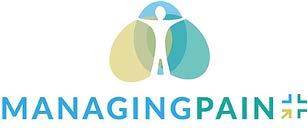
$100-200/hr (depending on qualifications)
Part-time (hours to be determined by the practitioner; ideally up to 2x days/week)
Location: Managing Pain, Suite 5D John Flynn Medical Centre, 42 Inland Drive Tugun Qld
Priv ate Multidisciplinary Pain Medicine Practice in Tugun seeking an experienced Clinical Psychologist/Psychologist to join our growing multidisciplinary team which includes multiple Pain Medicine Specialists, Physiotherapists and Psychologists. Also in 2022 it is highly likely that we will be joined by a Specialist Psychiatrist and Drug and Alcohol Specialist.
We currently offer individual consultations to all types of patients with persistent pain (privately insured, DVA, workers compensation, and motor vehicle accident insurance) both face to face and via telehealth. The team regularly collaborate to optimise patient management including informal and formal case conferences
About the successful applicant. You will:
• Have a compassionate and enthusiastic approach to work and a genuine desire to improve your client’s overall wellbeing and quality of life.
• Value building strong therapeutic relations with your clients and their referring specialists.
• Have a desire to grow as a therapist and increase your knowledge and therapeutic skills in the specialist area of chronic pain.
• Have knowledge and experience in CBT, EMDR and a broad range of mindfulness-based interventions, pain education, pacing and graded activity, relaxation etc.
• Have the ability to undertake functional assessments of clients and develop negotiated multidiscipline intervention plans with the client and other service providers.
• Have a post-graduate degree in Psychology (Masters, D.Psych, or PhD).
• Be eligible for full registration with AHPRA and the ability to register with Medicare.
• Have your own ABN and professional Indemnity Insurance. Interested Clinical Psychologist/Psychologists may be involved in the development and delivery of an outpatient Multidisciplinary Pain Management Program as well as mentorship opportunities with a broad range of pain management specialist including Clinical Psychologists/ Psychologists.
All practitioners are engaged as individual contractors under a service agreement which allows for the freedom to set their own consultation timeframe, timing and fee structure. A comprehensive administration provided by the service entity will arrange all appointments, approvals, billing etc. All interested Clinical Psychologist/Psychologists are encouraged to contact Dr Ring to discuss the practice and the role directly on 0477 002 019.
Thank you for your continued support and membership of the APS!
Please note:
1. We understand that circumstances change, so each year we ask you to select your appropriate level of membership.
2. This system of self-reporting subscription levels was implemented in 2009 for the benefit and fairness of all members.
Before renewing, please ensure you review and update your member profile online.
Payments can be made by Credit Card, BPAY, or Cheque.
Did you know that the Australian Pain Society is a registered charity with ACNC? Your donation will help the Society to promote the prevention and control of diseases in human beings associated with pain.
All donations of $2 or more to APS are taxdeductible.
New Members as at 27 January 2022:
Mr Daryl Gellesania, Anaesthesia
Ms Jessica Spencer, Occupational Therapy
5 March 2022
Neuromodulation Society of Australia and New Zealand
Cadaver Workshop 2022
Macquarie University Laboratory, Sydney, NSW https://dcconferences.eventsair.com/nsanzcadaver-workshop---november/
24-27 March 2022
IASP Pain in Childhood SIG
ISPP 2022 13th International Symposium on Pediatric Pain: Diversity, Equity, Access Online, Virtual, Online Conference
https://www.ispp2022.nz/website/17292/
24-26 March 2022
New Zealand Pain Society Annual Scientific Meeting
All Hands on Deck
The Cordis Hotel, Auckland, New Zealand https://www.nzps2022.nz/website/24660/
26 March 2022
Pain Association of Singapore
PAS Annual Scientific Meeting 2022
Online, Virtual, Online Conference https://www.pain-asm.com/
31 March - 2 April 2022
Australian Physiotherapy Association Thrive Conference
Brisbane Convention and Exhibition Centre, QLD https://australian.physio/pd/conferences
10-13 April 2022
Australian Pain Society 42nd Annual Scientific Meeting
In the IASP Global Year for Translating Pain Knowledge to Practice
Hotel Grand Chancellor, Hobart, TAS https://www.dcconferences.com.au/aps2022/
27-30 April 2022
European Pain Federation
12th Congress of the European Pain Federation EFIC The Convention Centre Dublin, Dublin, Ireland https://efic-congress.org/
20-22 May 2022
Australian Psychological Society College of Clinical Psychologists
Complexity in Practice - 2022 Annual Conference
Sofitel Brisbane Central, Brisbane, QLD
https://www.psychology.org.au/APS-CCLIN-Conf/2021
27-29 May 2022
Spine Society of Australia 33rd Annual Scientific Meeting
SSA 2022
Darwin Convention Centre, Darwin, NT https://dcconferences.eventsair.com/ssa-2022/
30 May - 1 June 2022
National Rural Health Alliance 16th National Rural Health Conference
Bridging social distance; Rural health innovating & collaborating
Perth Convention Centre, Perth, WA https://www.ruralhealth.org.au/16nrhc/
7-10 June 2022
Rehabilitation Medicine Society of Australia and New Zealand (RMSANZ)
5th Annual Scientific Meeting: Forging Alliances, New Horizons
Gold Coast Convention and Exhibition Centre, QLD https://www.dcconferences.com.au/rmsanz2022/
13-14 August 2022
2022 Neuromodulation Society of Australia and New Zealand (NSANZ 2022)
15th Annual Scientific Meeting - The Spine and Beyond: New Frontiers
Sofitel Melbourne on Collins, Melbourne, VIC https://www.dcconferences.com.au/nsanz2022
Vision:
All people will have optimal access to pain prevention and management throughout their life.
Mission:
The Australian Pain Society is a multidisciplinary association whose mission is to advance pain prevention, management and clinical practice.
Priorities:
In order to achieve our mission, the Australian Pain Society will provide:
> Education
> Advocacy
> Research
> Services and resources
> Membership
> Good governance and operations
President:
Ms Trudy Maunsell
Acute Pain Service
Princess Alexandra Hospital
Woolloongabba QLD 4102
Tel: 07 3176 5547 Fax: 07 3176 5102
President-Elect:
Mrs Joyce McSwan
Gold Coast Primary Health Network
Persistent Pain Program, QLD and PainWISE


Tel: 0412 327 795 Fax: 07 3539 9801
Secretary:
Mrs Dinah Spratt
Physiotas Physiotherapy
Shearwater TAS 7307
Tel: 03 6428 7500 Fax: 03 6424 7811
Treasurer
Mr Tim Austin
Camperdown Physiotherapy
Newtown NSW 2042
Tel: 02 9517 1787 Fax: 02 9516 2491
ACT Director:
Dr Andrew Watson


Calvary Hospital
Canberra ACT 2617
Tel: 02 6201 6352 Fax: N/A
NSW Director:
Dr Tim Ho

Inner West Pain Centre
RPA Medical Centre
Newtown NSW 2042
Tel: 02 9517 1764 Fax: 02 9517 1832
NT Director:
Dr Rav Harish
Alice Springs Hospital
Central Australian Health Service
Alice Springs NT 0871
Email: rav.harish@nt.gov.au

QLD Director:

Mrs Karalyn Huxhagen
KH Pharmacy Consulting
Mackay QLD 4740
Tel: 0418 185 972 Fax: 07 4805 6155
SA Director:
Dr Michelle Harris

Royal Adelaide Hospital and Lyell McEwin Hospital
Adelaide SA
Email: michelle.harris2@sa.gov.au
TAS Director:
Ms Bernadette Smith
Psychology Plus
South Burnie TAS
Tel: 03 6431 9959 Fax: 03 6431 9950
VIC Director:
Dr Laura Prendergast




Pain Service, Austin Health
Heidelberg VIC 3084
WA Director:
Ms Jacintha Bell
Lifeworks Occupational Therapy
Subiaco WA 6008
Tel: 0451 178 880 Fax: 08 6323 3329
Immediate Past President:
A/Prof Anne Burke
Central Adelaide Local Health Network
Royal Adelaide Hospital
Adelaide SA 5000
Tel: 08 7074 2835 Fax: 08 7074 6247
SPC Chair:
Prof Kevin Keay



Department of Anatomy
University of Sydney
Sydney NSW 2006
Tel: 02 9351 4132 Fax: 02 9351 2817
IASP Liaison:
Professor Michele Sterling

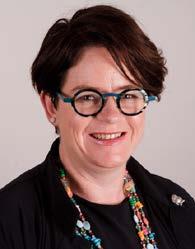

Recovery Injury Research Centre
University of Queensland
Herston QLD 4092
Tel: 07 3346 4793
Communications Coordinator:
Ms Trudy Maunsell
Acute Pain Service
Princess Alexandra Hospital
Woolloongabba QLD 4102
Tel: 07 3176 5547 Fax: 07 3176 5102
Newsletter Editor:
Dr Lincoln Tracy
School of Public Health and Preventive Medicine
Monash University
Melbourne VIC 3004
Tel: 03 9903 0288
Newsletter Assistant Editor:
Dr Joanne Harmon
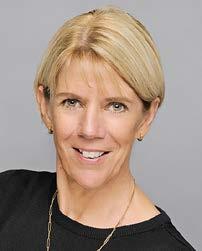
School of Clinical and Health Sciences
University of South Australia
Adelaide SA 5000
Tel: 08 8302 1442
PhD Scholarship Chair:
Dr Michael Farrell
Retired
VIC Secretariat:
DC Conference & Association
Management Pty Ltd
PO Box 637
North Sydney, NSW 2059
Tel: 02 9016 4343
Email: aps@apsoc.org.au
Website: apsoc.org.au
